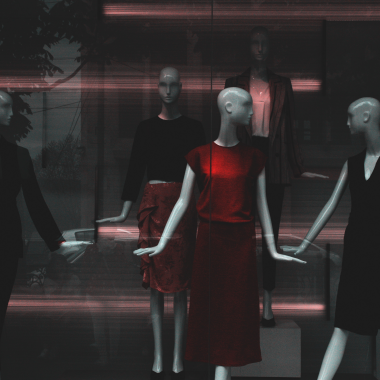Fast Fashion: What is it and Why is it a Problem?
Fast fashion is a term used to describe the mass production of low-cost clothing that mimics the latest fashion trends. It is a business model that prioritizes quick production and quick turnover of new styles, making it possible for retailers to release new collections every few weeks. This fast pace of production often results in lower-quality garments and increased waste.
The fast fashion industry has grown rapidly over the past few decades, becoming a major contributor to environmental and social problems. This is due to the fact that fast fashion relies on cheap labor and unsustainable practices, such as the use of toxic chemicals, the overuse of resources, and the generation of significant amounts of waste.
Fast fashion also contributes to a culture of overconsumption and waste, as people are encouraged to buy more clothing more frequently, leading to a cycle of buying and disposing of cheap garments. This has significant environmental consequences, as the production of textiles and clothing requires a great deal of water, energy, and resources, and the disposal of clothing creates massive amounts of waste.
Fast Fashion Pros and Cons
Pros of Fast Fashion:
- Affordable Prices: Fast fashion offers consumers the ability to purchase trendy clothing at affordable prices, making it accessible to a wider range of people.
- Convenient: Fast fashion clothing is widely available in physical stores and online, making it convenient for consumers to purchase the latest styles.
- Large Selection: With new collections being released frequently, fast fashion offers a large selection of styles and trends for consumers to choose from.
Additional Benefits of Fast Fashion
Apart from the previously highlighted aspects, there are several additional good things about fast fashion:
- Dressing for Occasions: Fast fashion provides affordable options for one-time events or occasions, such as weddings, parties, or job interviews. Consumers can find stylish outfits for these events without overspending on garments they might not wear regularly.
- Partnerships and Gifting: Fast fashion brands often collaborate with people, providing them with free clothing and accessories in exchange for promotion on social media platforms.
- Collaborations: Fast fashion retailers often collaborate with high-end designers and celebrities, making luxury-inspired designs accessible to a broader audience at lower price points.
- Trend Forecasting: Fast fashion companies invest in trend forecasting, which helps predict upcoming fashion trends. This allows them to provide customers with up-to-date styles, catering to the demand for staying on-trend without spending a fortune.
- Quick Adaptability: Fast fashion’s rapid production cycles enable retailers to respond quickly to customer feedback, allowing them to adapt their collections and better cater to consumer preferences.
Cons of Fast Fashion:
- Environmental Damage: Fast fashion has a significant negative impact on the environment, from the production process to the disposal of garments. It is responsible for high levels of pollution, water waste, and the use of toxic chemicals.
- Poor Quality: Fast fashion is often produced quickly and cheaply, resulting in lower-quality garments that are more likely to fall apart after a few wears. This leads to more clothing ending up in landfills, contributing to the already growing problem of textile waste.
- Labor Issues: Fast fashion relies on cheap labor, often in sweatshops, where workers are paid low wages and subjected to poor working conditions. This often leads to exploitation and abuse of workers, who are responsible for producing the clothing that we wear.
Why People Choose Fast Fashion
While fast fashion has been criticized for its negative impact on the environment and labor practices, it is essential to understand the reasons people continue to choose this industry. Here are some non-repetitive factors that explain the attractiveness of fast fashion:
- Influencer and Celebrity Styles: Social media influencers and celebrities often set fashion trends, and their followers want to emulate their looks. Fast fashion makes it possible for fans to copy their style icons at a fraction of the cost of high-end designer items.
- Emotionally Driven Purchases: Shopping can be an emotional experience, providing a temporary high when buying new items. Fast fashion capitalizes on this, offering consumers the thrill of frequently updating their wardrobe with minimal financial consequences.
- Seasonal Wardrobe Refreshes: As seasons change, so do fashion trends. Fast fashion makes it possible for consumers to adjust their wardrobe to match the current season without overspending.
- Disposable Fashion Mentality: The low prices of fast fashion garments encourage a mindset where clothing is seen as disposable. Consumers feel less guilty about discarding clothing when it is no longer in style, as the initial investment was minimal.
- Fear of Missing Out (FOMO): Fast fashion creates a sense of urgency by frequently releasing new collections. Consumers, driven by FOMO, feel the need to buy items before they are gone or replaced by new trends.
Why Do We Need to Stop Fast Fashion?
Fast fashion has a significant negative impact on both people and the planet. The production of textiles and clothing is one of the largest contributors to greenhouse gas emissions, and the use of toxic chemicals in the production process poses a threat to both workers and the environment.
The exploitation of workers in sweatshops and the promotion of overconsumption and waste are also major concerns. It is important to change the fast fashion industry in order to create a more sustainable and ethical fashion industry that prioritizes the well-being of both people and the environment.
How Can We Change Fast Fashion?
- Support Ethical Brands: One way to change fast fashion is to support brands that prioritize ethical practices, such as fair labor standards and environmentally sustainable production processes. This can help to drive change in the industry by demonstrating that consumers are willing to pay more for sustainable and ethical clothing.
- Buy Less and Buy Better: Another way to change fast fashion is to buy less clothing and focus on purchasing higher-quality garments that will last longer. This not only reduces waste but also supports the idea of slowing down the fast pace of fashion and encouraging people to invest in quality pieces that they will wear for years to come.
- Educate Yourself: By educating yourself about the negative impact of fast fashion and the alternatives, you can make more informed choices when it comes to your fashion choices. This can involve researching the production process of the clothing you buy, as well as the conditions under which workers are paid and treated.
- Upcycle and Repurpose: Another way to reduce the waste generated by fast fashion is to upcycle and repurpose old clothing, instead of throwing it away. This can involve restyling, repairing, or repurposing clothing to give it a new life.
- Advocate for Change: Finally, speaking out and advocating for change can help to shift the fashion industry towards more sustainable and ethical practices. This can involve supporting organizations and initiatives that promote sustainability and fair labor practices, as well as speaking up about the negative impact of fast fashion on both people and the environment.
- Embrace Slow Fashion: Slow fashion is an alternative to fast fashion that focuses on quality, sustainability, and ethical production. By understanding both the drawbacks and benefits of fast fashion, we can work towards creating a more balanced fashion industry that retains the positives of fast fashion while addressing its negative impacts.
By incorporating these practices, we can retain the positive aspects of fast fashion while minimizing its negative consequences. Also making these changes, we can help to create a more sustainable and ethical fashion industry that benefits everyone. This, recognizing both pros and cons of fast fashion can help us to work towards creating a more balanced industry.








